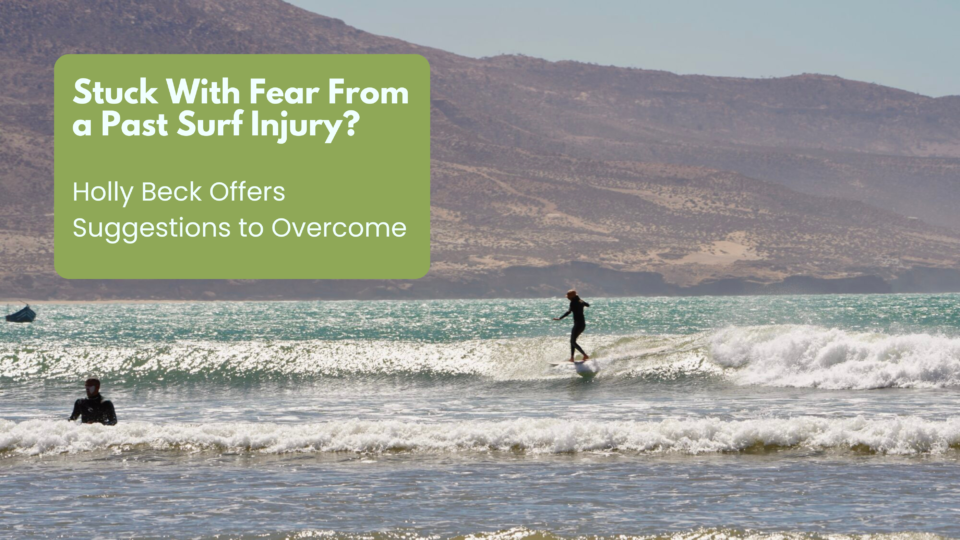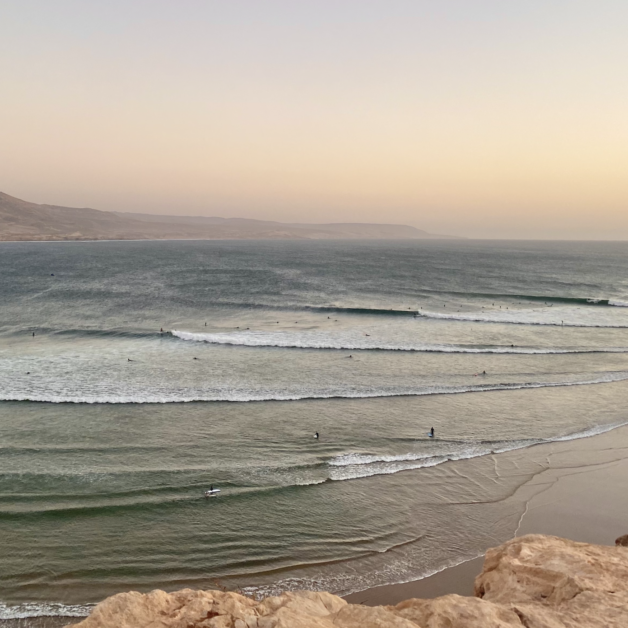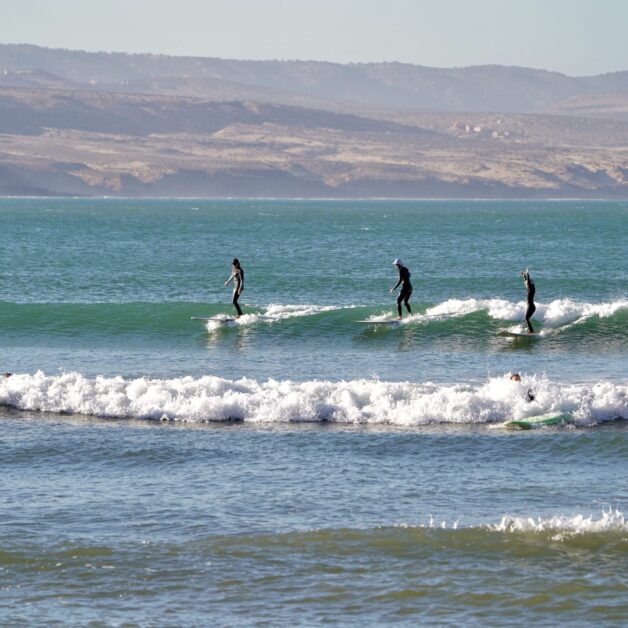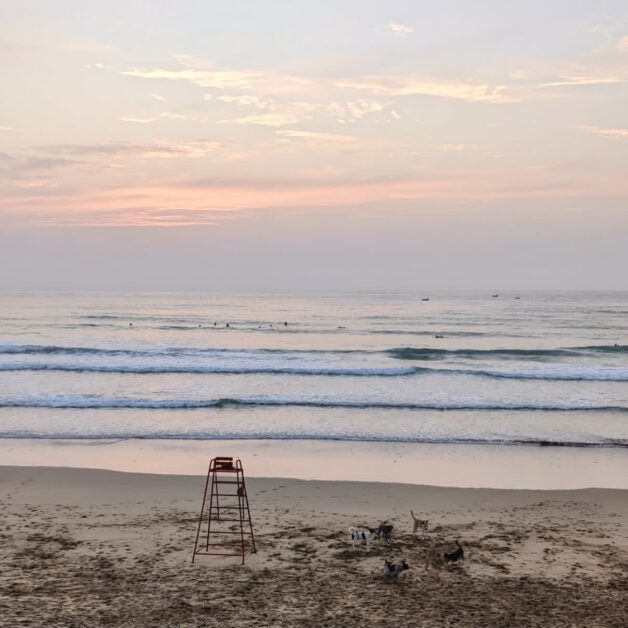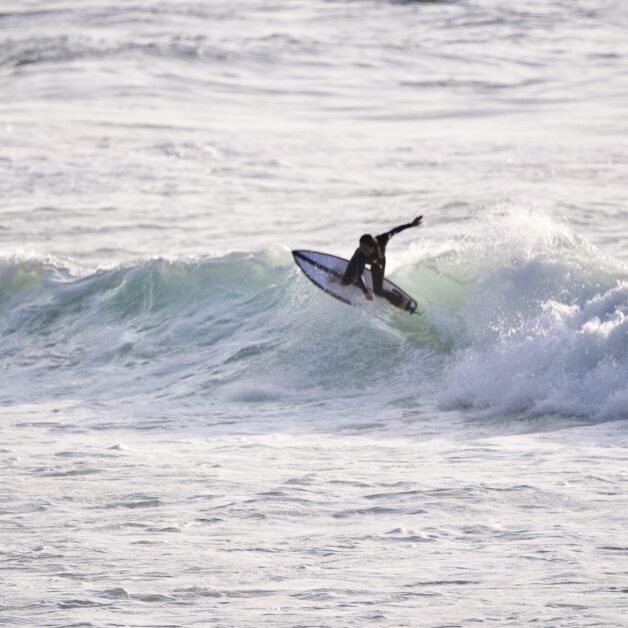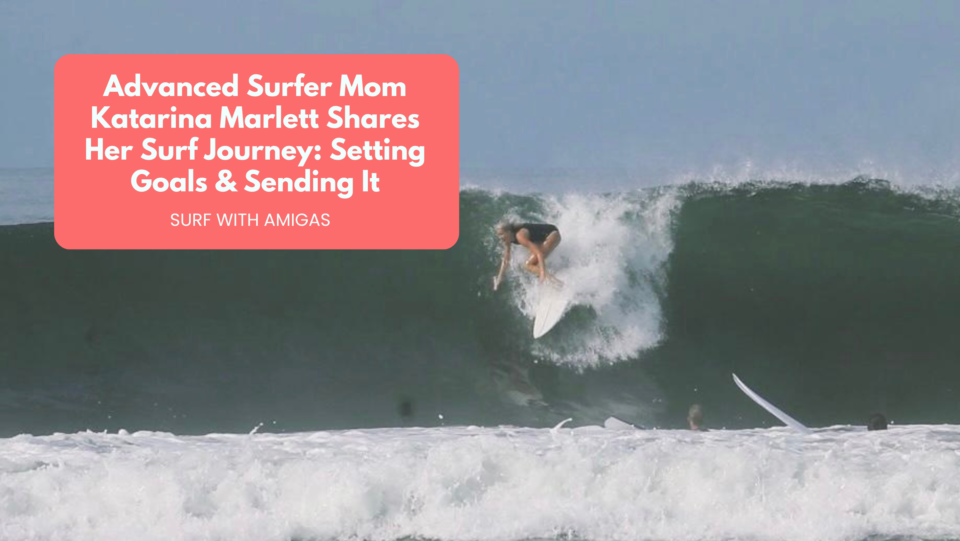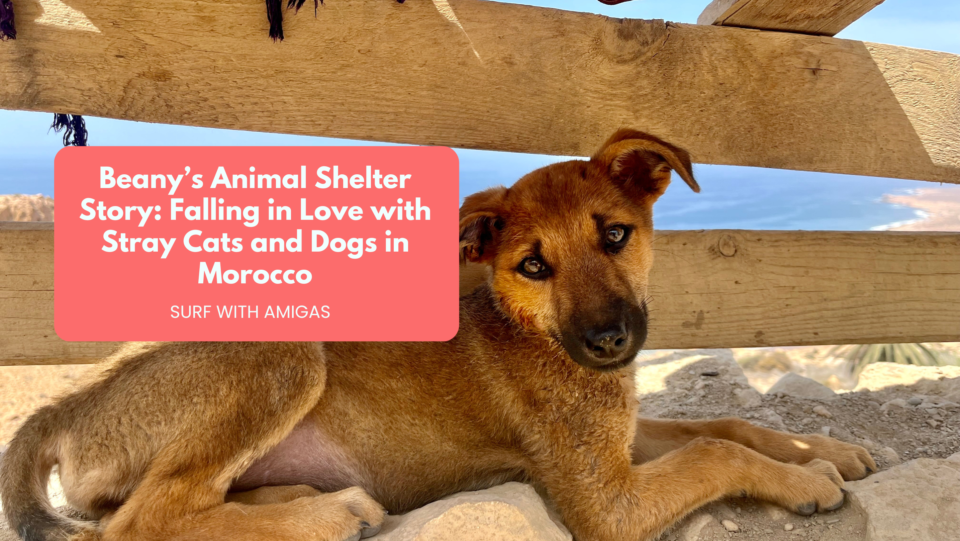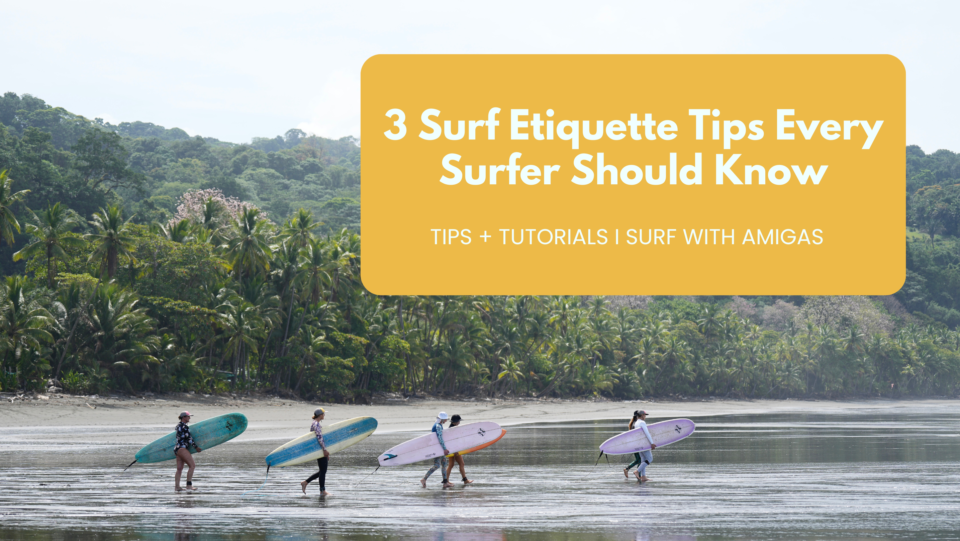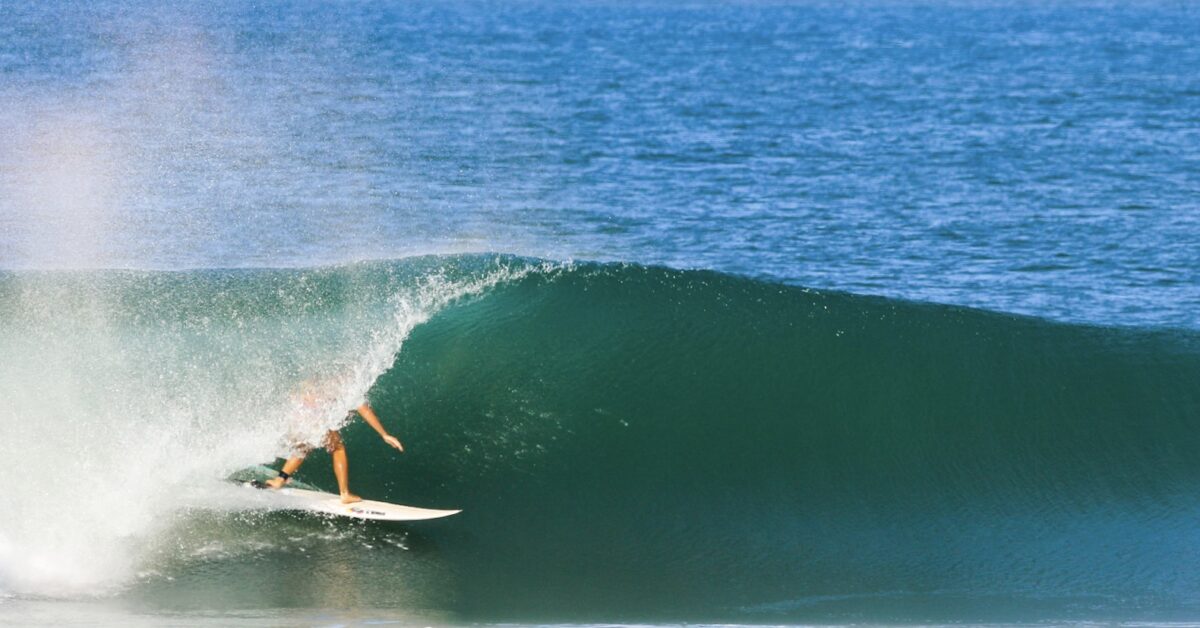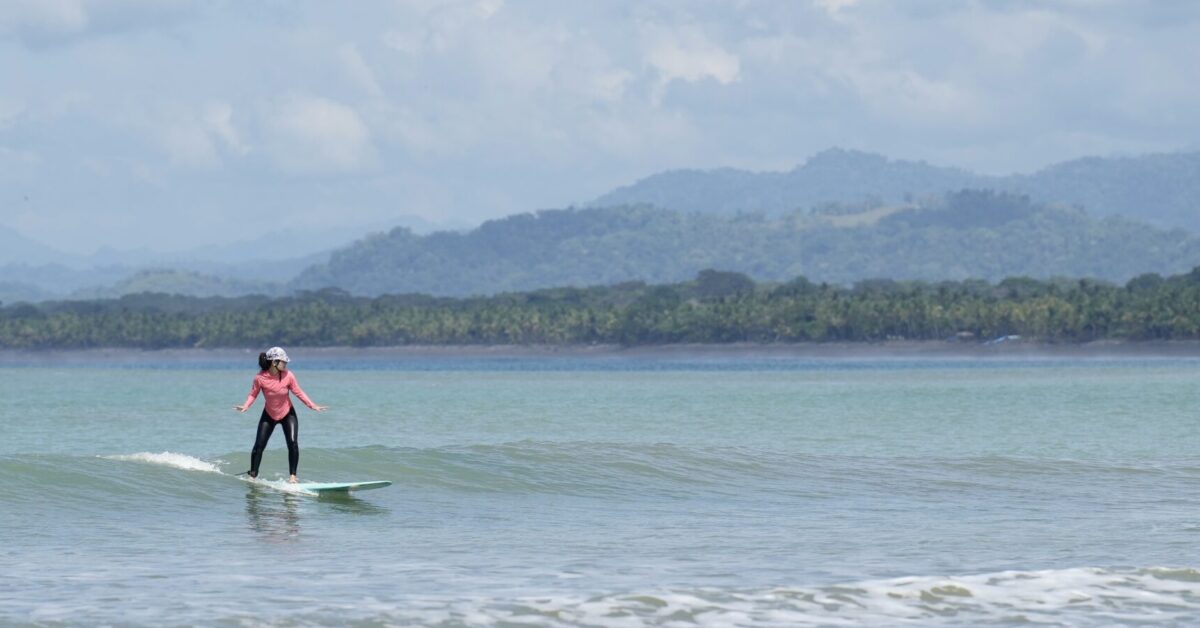Lately, I’ve received a few emails from potential clients who mention that they experience a lingering fear from a past injury. That situation seems to be really common and brought to mind the story of an Amiga that I met back in October in Morocco.
I was in Morocco on day 1 of a Surf With Amigas Holistic Surf Coaching Retreat, just getting to know the guests and starting to form a mental image of each participant, her goals, and how I could be most helpful. The vast majority of our guests use boards from our quiver to avoid having to travel with a board bag but one of the participants, we’ll call her “Sarah”, had brought her own – a Takayama mid-length. I could tell by our chit-chat about the conditions even before we paddled out that she knew how to surf. She presented as strong and confident, walking down the hill to the waist-high peeling rights.
In the water, she paddled assertively, positioning herself well, taking off with perfect timing, and maneuvering down the line. “She knows how to surf!” I thought, and then told her so as she paddled back out to me. “Ya, I’m fine when the waves are small and easy,” she replied.
A few days later, the swell was small enough that the point break was slow and boring. We made our way around to the more exposed beach break on the other side. The waves still weren’t what I’d call “big”, but they were closer to head high. The peaks popped up and broke more quickly. The wave was soft, breaking over sand, but there was a quickness to it, particularly in comparison to the slow, easy point break waves we had been surfing. I noticed a different energy in Sarah. If she was closer to the peak, she’d pull back and not take off. If she was anything close to being a little late, she’d let the wave go. Having surfed with her for a few days already, I believed she had the skill to take off late and deep and make it, but she was avoiding those situations.
In taking a moment to connect with her and ask about her experience, her story emerged. 20 years ago, she’d been in deep Baja CA, a week into what was meant to be a month-long+ trip. While trying to take off on a wave, she was a bit too late on a steep section. She tried, but didn’t make the drop. She became one with the lip, and in the process landed on her fin, which gouged deep into her thigh. It took a while to get the attention of the people she was with, to get to the relative safety of the beach, only to then endure a long bumpy drive to a very basic clinic and scary health care situation in a remote area. The injury ended her trip. Once back at home and physically healed up, she flung herself back into the ocean.
She didn’t want to let the injury stop her. She didn’t want to appear weak. She tried to forget about it and just keep surfing. That worked…. sort of.
As we drifted outside the surf zone, I quietly listened to her story. It all made sense to me. Her body had suffered a painful trauma. If the injury had happened in CA and she’d received help immediately, including good medical care, and the whole experience hadn’t ruined a long anticipated adventure, it may not have become as heavy of an emotional weight. In her case, the physical memory of painful injury combined with the fear and anxiety of the remoteness of the location and large serving of disappointment due to the altered trip, all combined to serve as a significant trauma.
The coping mechanism often suggested by our society : to “just get over it and get back out there,” worked, in the sense that it didn’t stop her from continuing to surf. However, it didn’t help her process the trauma. Therefore, even 20 years later, she still felt the effects.

Sarah initially told her story without much emotion. It was very matter of fact, as if telling a story that had happened to someone else. I listened, asked a few questions to be clear on the details, and then started by validating how scary that must have been at the time. I gave her space and encouragement to sit with the feelings of fear. When given an opportunity to connect to the feelings of the story, instead of just the details, the tears started flowing. She apologized, but I encouraged her to let the feelings happen. It’s ok to not be ok right now.
After the moment passed, I explained that it’s totally normal and understandable that she feels fear when faced with a situation (a steep drop) that triggers her body to remember a time it was injured. By ignoring it or avoiding those situations, she isn’t allowing herself the chance to move past it. We talked about the importance of accepting the fear.
Rather than trying to avoid the fear or feeling shame that it exists, the healing process begins with allowing oneself to feel it.
Her body is trying to keep her safe. That’s a good thing. We took a minute to listen to that message, accept it, and actually thank it for its efforts, allowing whatever emotions arise to flow. I suggested to talk to that fearful part, telling it, “I’m sorry you were hurt so badly. That was a very scary time and your reaction was perfectly justified. Thank you for trying to keep me safe. I appreciate you.”

Once that fearful part has had its chance to fully express whatever needs to be expressed, and those feelings are accepted and appreciated, there’s space for the next step, which is to notice what has changed since then. Since that time, Sarah has been surfing for 20 years. She is a much better surfer than she was back then. She has the skills to make steep drops. If there’s any doubt about that, surf coaching and working on popup technique can help.
Then, start small. On a small wave that’s only a little bit scary, try to pop up late. Notice the feelings that come up. If there’s fear, thank it for what it’s trying to do (keep you safe), but assure that part that you are capable. Come up with a positive mantra that works not to argue with that voice, but to change the script. Little by little, work up to bigger waves and steeper drops, not ignoring fearful feelings, but embracing and accepting them.
Celebrate successes, lean into falls, and smile at the simple pleasures and teachings of the ocean.
In preparing to post this story, I checked in with Sarah to see if she would be ok with me sharing and also to see if the she’d noticed any positive changes in the four months since our sessions. She said,
Yes it did help…. I repeat “all is well” to myself pretty much every time I turn for a wave now. It reminds me I’m ok, that I’m in control, and that it’s supposed to be fun. I think I never gave myself permission to talk about my injury because it maybe seemed trivial and I had no one who would understand it in a more complex way. So yes, it definitely helped. And it’s a process. Even just the permission to address those things in my surfing that hold me back helped so much. I feel like every session since Morocco is accompanied by a memory or conversation from the retreat that empowers me. I’m really glad I went and I look forward to going on another next year. It was an incredible experience and I really appreciate you listening and noticing and being there.
Holly recently completed a Master’s in Counseling and has been incorporating mental and emotional awareness into coaching to create Holistic Surf Coaching retreats. For more info on these specific retreats, click here.

